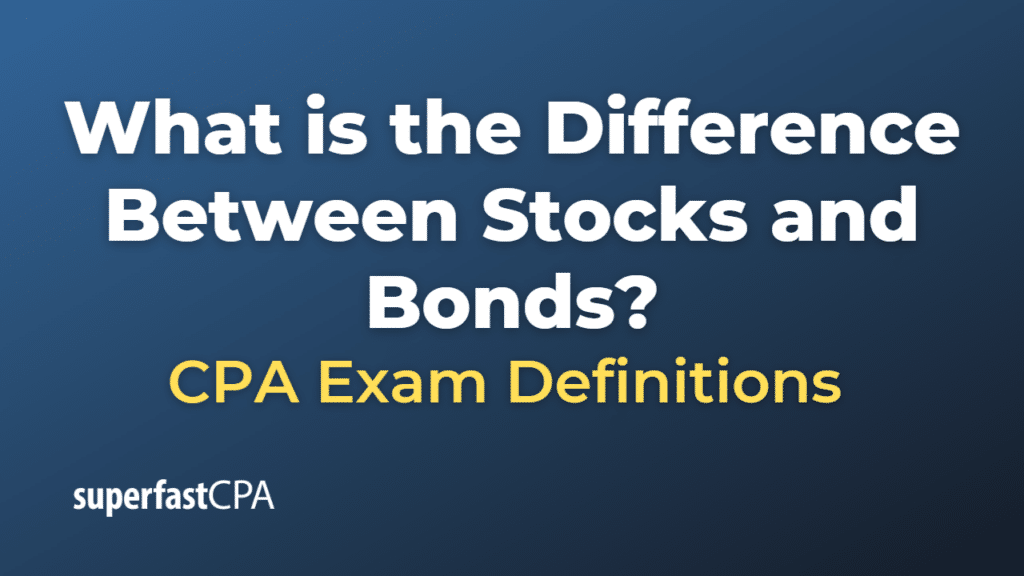Difference Between Stocks and Bonds
Stocks and bonds represent two different ways investors can invest in a company, and they come with different rights and potential returns:
- Stocks:
When you buy stocks (also known as shares), you are buying a piece of ownership in a company. This often gives you the right to vote at shareholders’ meetings and receive any dividends declared. The value of stocks can rise and fall based on a multitude of factors, including the company’s performance, general economic conditions, and investor sentiment.Stockholders take on more risk because if the company goes bankrupt, they’re last in line to be paid, after bondholders and other debt holders. However, stocks also have the potential for higher returns, especially in the long term. - Bonds:
When you buy bonds, you are essentially lending money to the issuer (which could be a company, a municipality, or a national government) in exchange for periodic interest payments and the return of the bond’s face value when it matures.Bonds are generally considered less risky than stocks. If a company goes bankrupt, bondholders are prioritized over stockholders in receiving repayments. However, the potential returns on bonds are typically lower, limited to the agreed-upon interest payments, also known as the coupon rate.
In summary, the main difference between stocks and bonds lies in what you are buying – ownership in the company (stocks) or a debt that the company promises to repay (bonds). This difference leads to different risk/return profiles for the two types of investment.
Example of the Difference Between Stocks and Bonds
Let’s use a hypothetical example for better understanding:
Example of Stock Investment:
Suppose you buy 100 shares of a company named TechFuture Inc., with each share priced at $50. Your total investment is $5,000. By buying these shares, you have become a partial owner in TechFuture Inc. If TechFuture performs well, the price of its shares may increase. Suppose the share price rises to $60, your investment would then be worth $6,000.
Also, if TechFuture decides to distribute dividends, you would receive a share proportional to your ownership in the company. However, if the company performs poorly, the share price could drop, reducing the value of your investment. In the worst-case scenario, if TechFuture goes bankrupt, you may lose your entire investment as shareholders are last in line to receive any remaining assets after all debts and obligations have been paid.
Example of Bond Investment:
Now, instead, imagine you buy a bond issued by TechFuture Inc. for $5,000 with a 5% annual interest rate and a maturity of 10 years. This means TechFuture is borrowing $5,000 from you, and in return, it promises to pay you 5% interest per year, which would be $250, and return the $5,000 principal to you after 10 years.
If TechFuture performs well or poorly, it doesn’t directly affect the return on your bond investment as long as the company doesn’t default on its debt. You would still receive your annual interest payments and get the principal back at the end of the term. However, if TechFuture were to go bankrupt, there’s a risk you might not receive your full principal back, although you would be prioritized over shareholders in the distribution of remaining assets.
In both scenarios, you’re investing in the same company, but the structure of the investment and potential outcomes are quite different. Stocks generally carry more risk but offer higher potential returns, while bonds offer more stability but typically lower returns.













